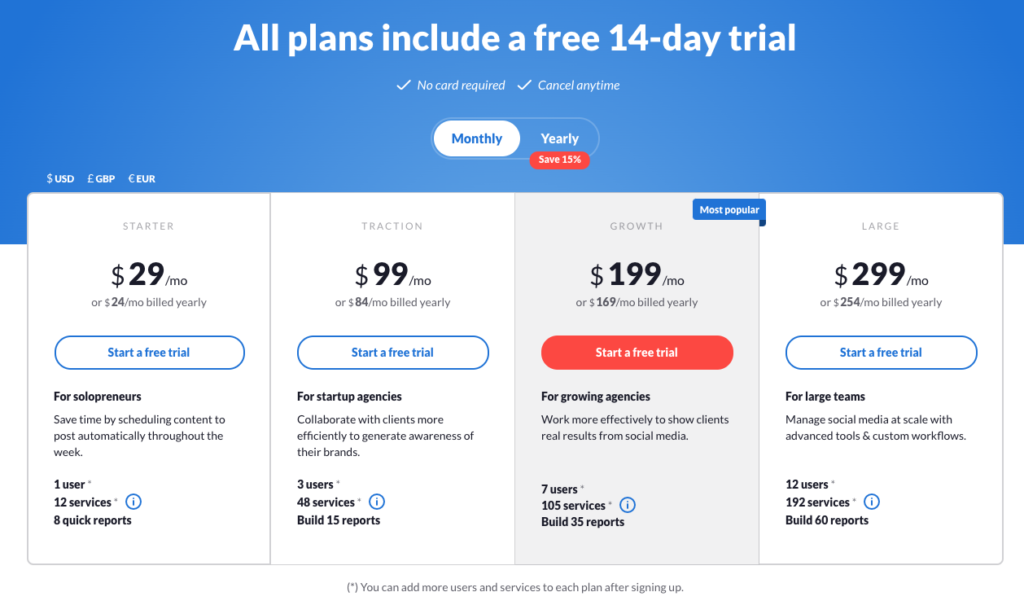Stop the Interruption: Becoming What People Want on Social Media
Sendible wants to help businesses connect authentically with their audiences. Gavin Hammar believes that influencer marketing won’t help that connection happen.
With more than 3.5 billion social media users, social media offers businesses the opportunity for authentic connections with their audience. Savvy brands, marketers, and bloggers are turning to social media to
- Gather intelligence,
- Join or respond to discussions about their brand
- Handle customer service
- Share information
- Create brand awareness
And lots more.

Authenticity is the key to profitable customer or user relationships. But being authentic is tough work. This is probably why businesses turn to influencer marketing — leveraging familiar, semi-authentic experiences — to connect with their target audiences.
Gavin sees things differently. He says
- Influencer marketing is in dissonance with brand authenticity and will dwindle over time
- Social media ads won’t work much because they counter the goal of social media platforms: to keep people as long as possible on those platforms
In Gavin’s words,
“I think the key here is really focused on just delivering value on social media, being authentic, sharing your stories, and not trying to take people away from the platform.”
My Discussion with Gavin Hammar
I sat with Gavin Hammar, founder of Sendible to discuss how to stop interrupting your audience and become what they seek on social media.
1. Hello, please introduce yourself

Yeah, I’m the founder and CEO of sendible.com. We provide social media management software mainly for agencies. We have over three and a half thousand agencies that use our products at the moment. And, we’ve been in business for about 11 years now.
2. Why “Sendible,” what does the name mean?
When I first created the products, I built it in a way that made it possible to send any type of message. You could send an email or SMS. You could send it to social media, LinkedIn, Facebook, et cetera.
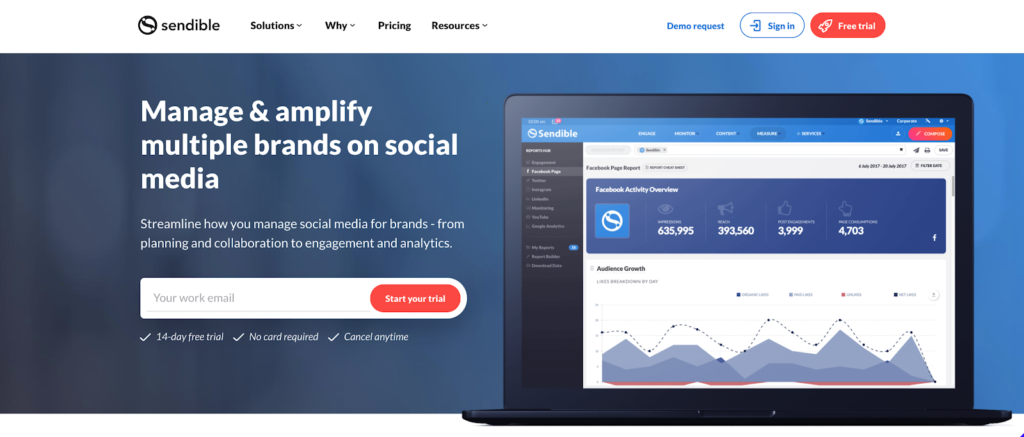
The name came from sending anything is possible through Sendible. So Sendible is “send anything-IBLE” is possible. Sending anything is possible.
3. What personal experiences or realizations inspired Sendible? Please give us a brief history of Sendible.
It wasn’t deliberate. So, my dad runs a cleaning chemical company in South Africa. And he wanted a way to be able to schedule messages for his staff birthdays. You know, be able to use some sort of software where you can schedule the email or SMS messages.
I started just working on this windows based software, there was no interface, no websites, just a tool that could let him and anyone else kind of schedule messages to any platform, not just for birthdays but for anything. So eventually I kind of built this product out that could send anything to social media, email, SMS, et cetera.
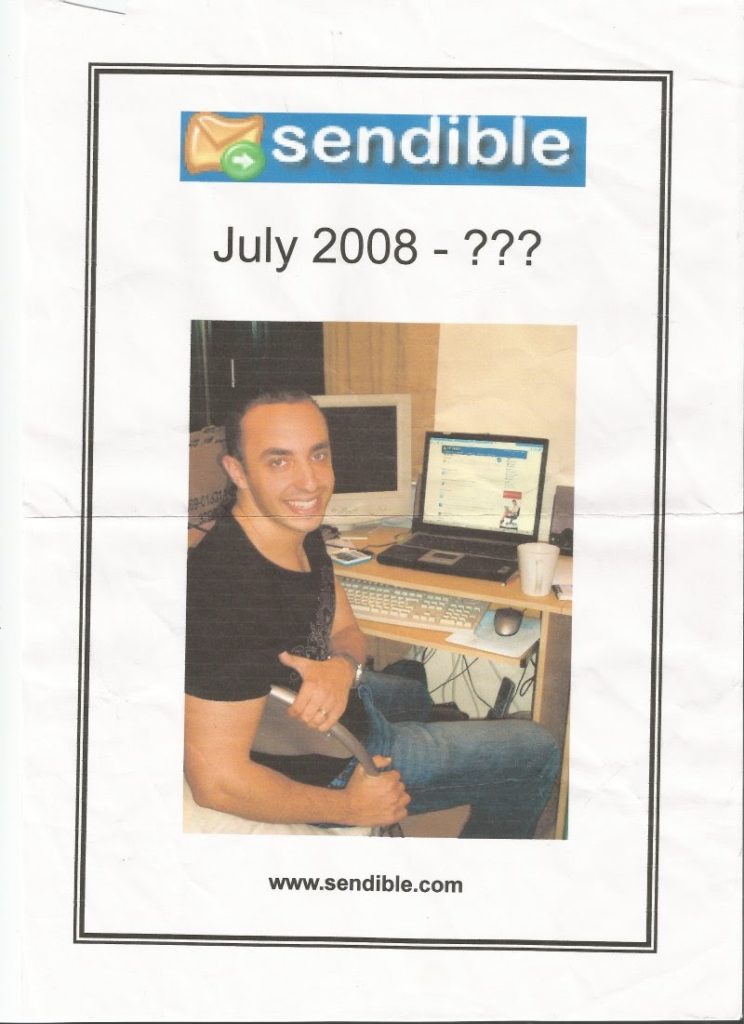
I think for about the first couple of years it was just a windows based application. And then I thought I’d make it available on the web. So I built the website around it and opened it up to the world to use. I guess the trigger was my dad just saying, can you schedule birthday greetings to staff?
4. In the face of changing social media algorithms, especially now that Facebook is prioritizing individual content over brand content, why are you making social media management your top priority problem to solve?

That’s a good question. I think social media is the best storytelling platform there is right now. It’s the best way to connect with the audience, build trust, and build a following that believes in you.
So we want to help agencies tell their client’s stories. It’s not just about social media, it’s about us helping them craft content that gets engagement, that builds an audience, and has a reaction. And I think social media is still the best way to do that.
The algorithms and everything is always going to be about quality content, quality storytelling on social media. And as I said, it’s the best storytelling platform there is. So we want to do our best, do whatever we can to provide the tools that can help agencies tell their client’s stories.
5. Sendible believes that “Brands can be successful on social media only when they stop interrupting what people are interested in and become what people are interested in.” How is Sendible helping brands and marketers become what people are interested in?
For now, we’re doing it through education. So we’re trying to help our customers know what works best on social media, and have a structured content that’s more engaging with the audience. But going forward we are building other tools to help them source the contents that can help them drive engagement.

So just, for example, people don’t really care about what you do. They care about why you do it. They care about the behind the scenes stories of how a company goes about doing what they do. We’re trying to educate them not to kind of sell products, not to sell on social media. So it’s all about building trust through showing behind the scenes, showing what goes into building that product or service you are offering as a business.
So we educate them throughout. We would do webinars, we do training, to help them at the moment. The next step is to help them craft the content that actually helps to build trust from the audience, not interrupt them daily.
So when I say interruption, you know, people are using ad blockers to block ads. They don’t wanna be interrupted anymore. They’re getting better at filtering ads, ignoring ads and they’re getting better at seeing what’s real and what’s fake. Things like influencer marketing aren’t going to be here for the long term because it’s so inauthentic.
So it’s about being your authentic self on social media, being the real you, being vulnerable. That’s what people buy into. And that’s why storytelling is kind of building this hero’s journey through the content you tell. The content you share on social media is the best way to not interrupt people because they get behind you. And they see that you are just a real brand or a real person trying to run a business.
It’s a roundabout way of answering the question, but essentially it starts out being authentic and being the real you and not selling all the time, but really showing behind the scenes how you go about doing what you do every day.

6. You said influencer marketing is not going to be here for the long term. Why do you think so?
Because it’s inauthentic. Right? When influencer marketing started, people weren’t being paid to promote your content. They were just doing it because they found it valuable. But now, because people are looking for what’s real and what’s fake, they are starting to ignore anything that’s fake, anything that’s inauthentic.
So you have influencers posting some things that they have been paid to post. People are not going to trust it anymore. It’s no longer the trust factor because they’re being paid. So people are looking for what’s real, what’s authentic. They’re looking for communities they can fully trust because the influencers that are being paid are no longer trusted by the audience.
That’s a big issue. I mean, there are also influencers that aren’t being paid, but the ones that have hashtag ads in their posts, you know, I just don’t think there’s a future for them. I think you have to be sharing the things you really use, that you believe in as an influencer, and not just sharing it because you’re being paid to do so. Does that make sense?

7. It makes sense, but are you saying that influencers can’t be authentic and get paid at the same time.
I’m not saying that there’s no way. I’m saying, you have to find a way to be impartial and just focus on delivering value to your audience. To make sure your audience trusts you. And the influencers that have been paid to promote something, you know, they can’t necessarily be trusted anymore.
It’s the same as an ad, right? You are paying Facebook or Google whatever, to show that message to an audience. Same thing with an influencer, you pay that influencer to show your message to their audience.
The problem here is that just like ads are being blocked, people are going to learn to block influencers in the long term too. When they start to see that they’re not trusted anymore. So trust is the big issue right now. Being able to build trust from an audience.
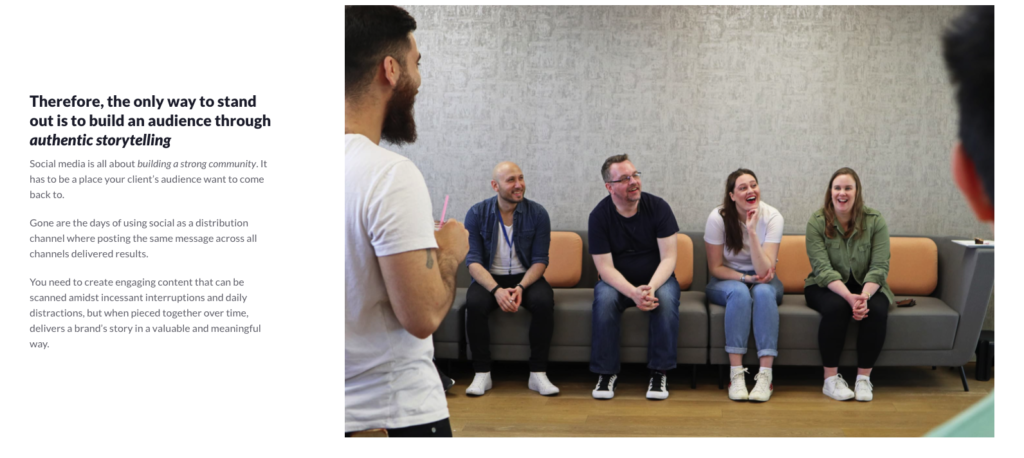
8. What improvements are you making at the moment for Sendible users?
I can’t talk about what we’re working on right now in terms of new products, but I can tell you in terms of what we do in the current product. Because we work mainly with agencies and freelancers.
Their biggest problem is how to look good in front of their clients. Like how can they deliver value to their clients? We try to help them every step of the way to show value.
One thing we’ve done recently is – so when they’re composing a social media post, we’ll show them what that post looks like, what will it look like on their social profiles before it even gets published. They can make stick and tweak it to make sure it looks correct before it goes out. That’s a big deal. I guess.
I guess a big issue with third-party tools is that every now and then your profile gets disconnected from the platform. If you’re being paid to post, let’s say three posts a week for your clients. And then one of your posts doesn’t go out because your account got disconnected. That makes you look really bad in front of your clients.
We’re building tools to make it more proactive. To let them know when they have to reconnect their profiles and make sure that we can double-check, that all their contents go out on time before they even get scheduled out. That’s been a big deal for them. I mean, these are small things, but it goes a long way for these types of users, being able to be reliable as a tool and help them out.
The third thing we’re looking at is improving our calendar. So we have a calendar tool where you can kind of plan out all your content. We want to make it accessible to the agency’s clients. So the agency can collaborate more easily with their clients on their content plan, and get feedback on the content that’s going out. That kind of thing.
And then the final thing is – we’re looking at improving our bulk importing capabilities. Say you have a client, you’ve got a massive campaign and you want to bulk import it to Sendible. We want to make it easy so that you can import all those posts, but also give your clients a preview of what that’s going to look like over the month, whatever it is, or however long you’ve got that campaign going out.
That’s just some of the things we’re working on right now to help our customers. But we tend to get feedback from them all the time. Our roadmap is always changing based on what people are voting for and what their needs are.
9. You earned the Facebook Marketing Partner status in 2017. How does this help your users, what did you learn on your way to becoming recognized this way by Facebook, and what will you do with it?

You’ve done your research? This is good. We’ve been on Facebook’s platform since they first launched the platform for the parties. And in fact, we actually discovered a major bug in Facebook back in the beginning of their API. If you look at Techcrunch, you can see the article.
We actually discovered that anyone posting through a third party could actually impersonate any brand they wanted. So we had users posting to Sendible and impersonating, let’s say Starbucks for example, and the post would go out as Starbucks. We’ve been part of their (Facebook) platform since the beginning. I think the status really right now gives us early access to capabilities that other integrators don’t have, a lot of the developers don’t have.
So for example, we are able to publish directly to Instagram, you know, videos and images. Whereas that’s restricted already to the partners. And because Facebook owns Instagram, we got access very early on that. They’ve now blocked access to any other third parties from getting access to the Instagram API.

So being able to obviously work with them, give them feedback on their API. Even right now, we have regular calls with them, you know, to kind of discuss privacy issues and that kind of thing. And obviously helped them with their APIs and see what we could use for our customers.
The biggest thing is getting early access to upcoming API features before anyone else to bring value to our customers early. That’s a big deal. The other thing they have is, they actually have a partner directory on their websites – on Facebook’s website. Every now and then we’ll get referrals from Facebook for businesses who need our tools.
10. What’s the best thing anyone ever said about Sendible?
It’s a tough one. Let me think. I think the best thing is when they say that they couldn’t run their business without it. So the fact that we are helping other businesses grow and succeed and that they wouldn’t be able to be in business if it wasn’t for Sendible. That’s the best thing. Like we are such an integral part of their business.
That means that we are delivering value, that if it went away, they would pretty much struggle and be out of business. So for us, our main goal is to always deliver value for our customers. So when we know that the value is so great, that it would really impact them in a big way. I think that is the biggest thing for us to know we’ve made an impact.
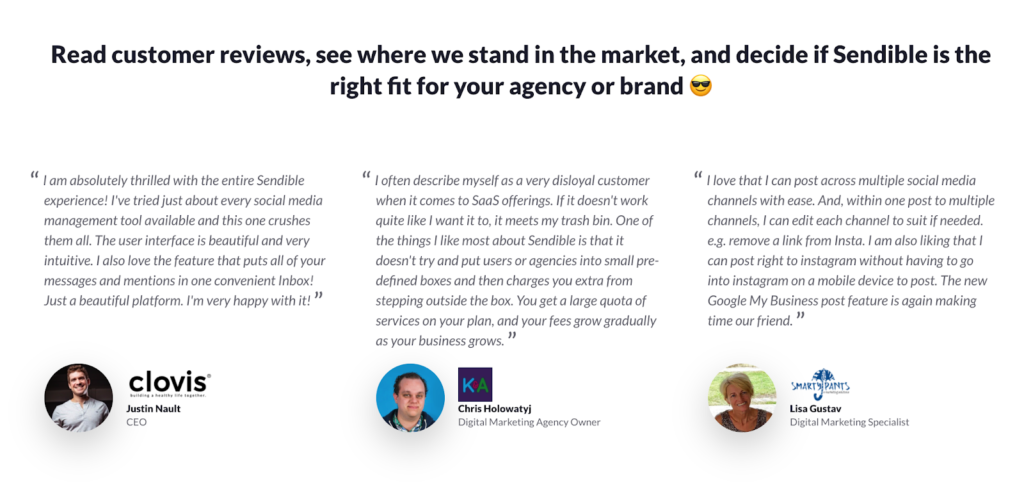
11. What’s one fascinating thing about your product you’ve never talked about to anyone?
Good question. The fascinating thing about the product? Let me think. We have a feature that’s very rarely used, where a user can actually insert a merge tag into their social media posts.
How that works is – if you’re publishing like a thousand pages at once, you can have so many cities and insert a merge tag, so that for each page you’re posting to, you can customize the contents.
Let’s say you have a local business and the location is let’s say London. And you have another business and the location is in Los Angeles. You can actually put in sets of custom fields or merge tags, that when you post out the content, it can be replaced with the value of that field at the time it gets published.
So, you know, you can write one message, it goes to 3000 pages, but the content is different in each page using those merge tags. So that’s quite an advanced feature. It’s quite hidden in Sendible, but we do offer it to franchise businesses who have these massive numbers of pages. So that’s the kind of a lesser-known feature that we offer.
12. What feature(s) gives Sendible an edge over Hootsuite or other top competitors? Why should businesses migrate to Sendible?
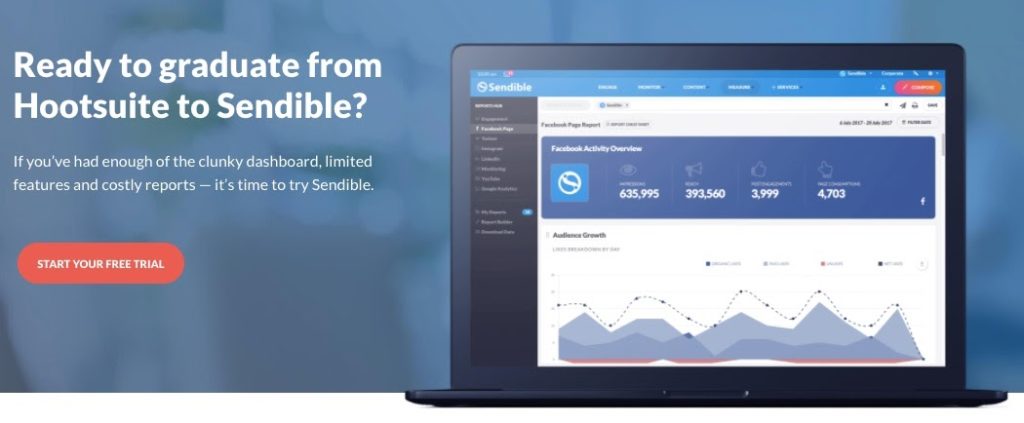
The main thing is we don’t nickel and dime our customers over every little feature like Hootsuite does. We know that for every report you have to buy credits on Hootsuite. Which makes it very expensive for an agency, you know, as they are scaling to offer a service to their clients.
Let’s say you have a hundred clients and you have to buy a credit for every report, that gets very expensive. We give access to all features or reporting features in most of our plans. We don’t charge you extra for more reports. You know, you get access to all of that stuff.
The other thing is, I know Hootsuite on their lower plans, they restrict the number of scheduled posts you can have. We don’t restrict that. There are no limitations.
The main thing is we don’t nickel and dime our customers over every little feature like Hootsuite does.
So mainly, there’s more freedom on Sendible. We are more scalable. We can help you grow. Whereas, Hootsuite is quite restrictive. And because Hootsuite started off as a tool to help you manage your streams, you have all of these different tabs. It can be quite chaotic.
We give you a single dashboard per client, so you can actually have all your clients incoming engagements coming into one priority inbox. So you can help manage their incoming engagements in one stream. Almost like one task list, rather than having to check every single stream, jumping between streams, jumping between clients. Sendible is a lot more organized when it comes to agencies.
I know Hootsuite has its strength; that’s really good for freelancers. You know, for getting started for one person, one brand. But Sendible is really strong when it comes to managing multiple clients for an agency.
In the product, one thing we’ve introduced, which has been really useful, which is kind of a differentiating factor again, is the ability to craft one post but then customize it for each platform as you write it. That’s a feature called smart post.
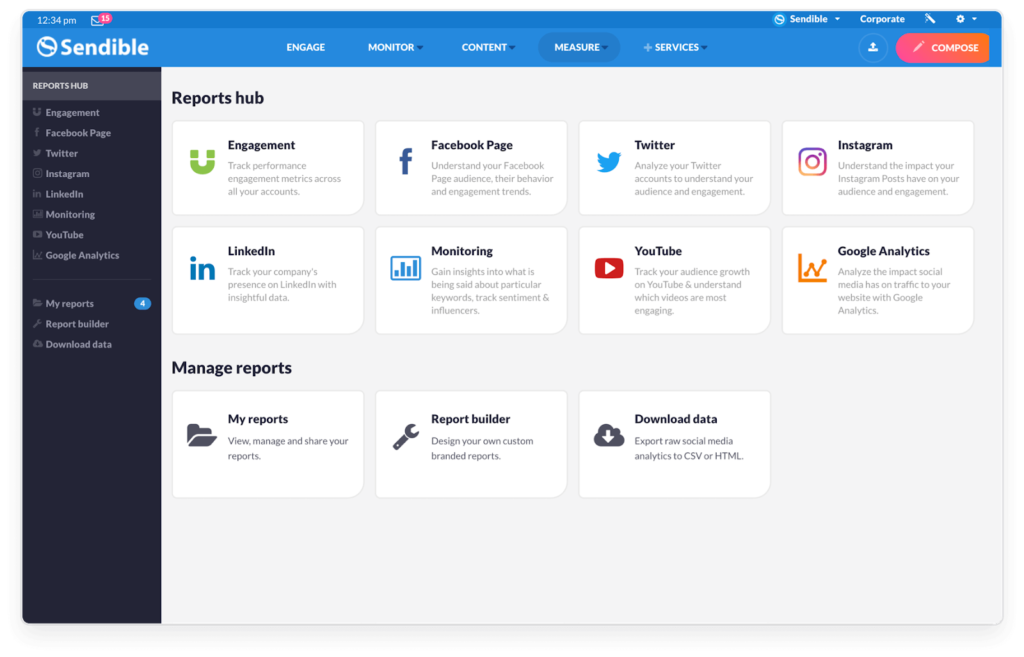
13. How does Sendible’s white-label-software and Single Sign-on (SSO) improve social media management for brands and marketers?
So the white label software is really a way for agencies to build credibility and to attract more clients to the offering. The way our top set of agencies are using it is — they’re taking the white label and they’re kind of using it as a service offering to their clients.
We have one white label that offers — it’s quite a niche, it offers social media management for vets — veterinary clinics. They actually provide content. They create like this content library for their clients and they use their white-label to let their clients pick what content they want to publish out. They are their content creation company.
But Sendible’s white label helps them with the kinds of tools to publish the content. The single sign-on really helps create a seamless experience across multiple platforms. So the agency might have a login to their main agency platform, but then from there, they can also automatically log them into their Sendible white label dashboard to be able to pick the content they want to publish.
14. Social Media is mature now, what trends will impact businesses and agencies the most and how should they prepare for these trends or changes?
This year is quite a different year. I think that the trend we’re going to see is that ads are going to become less effective. Right? People are going to start, as I said, ignoring ads. I think it’s like 60% of Americans had ad blockers installed now. That’s some statistic, you can look it up.

There’s definitely an increased trend in ad blockers. And because people are kind of ignoring certain things.
We need to get better at, as I said to you before, it’s just being what people want to be interested in, what they’re interested in and not trying to take them away from the platforms.
We’ve seen a trend where things like links on social media don’t work as well as they used to anymore. Because algorithms are designed to keep you in the feed. Facebook, LinkedIn, Twitter, they want to keep you in the feed for as long as possible on their own platforms, which is why video has worked so well. Images are working well.
We are seeing a trend where links don’t actually drive as much engagement or reach on social media. Which is why, ads kind of contradict the whole thing, as they’re trying to take away from the platform. But the platform is trying to keep you in the newsfeed. This is a massive contradiction of what’s going on here.
So I think the key here is to focus on using social media for brand building only. So don’t try to draw people away from social media, try to play with the algorithms, play nicely with them, and keep people in the feed as long as you can. So you use video, use images, share anecdotes and stories. But don’t worry so much about driving traffic to your website anymore.
Just use social media as a way to build trust, building the audience. And then later on when the time’s right, you can throw any odd ad, throw any odd link, and once they trust you, they’re likely to want to click that link and then buy from you in the future.
I think the key here is really focused on just delivering value on social media, being authentic, sharing your stories, and not trying to take people away from the platform. So I think that’s the one thing that’ll stand the test of time on social media. It’s kind of going back to its roots as what the platform was there for.
That’s what it was from the beginning: to deliver value, keep people in the feed, drive engagement, drive conversation, generate comments, and not try to sell so much.
15. If someone who’s never used Sendible, but has heard good things about it got curious and read this interview, what would be your best advice to them on using the platform for their goals?
I guess you have to have a strategy first, right? Like what is your strategy? Have your goals in place first before you even use a tool like Sendible.
Is your goal to build an audience, is it to build trust.
How are you going to approach that?
Are you going to schedule your posts out every week or three posts a day?
How are you going to plan out your content?
I would say start by just coming up with a plan for what you want to achieve. Then see if Sendible is the right tool to help you achieve that goal.
Personally, I actually like to share something on LinkedIn every week; some lessons I’ve experienced personally. So I’ll kind of make sure that I’m scheduling a post once a week through Sendible. And I might schedule it long in advance. So I know that I can free up my time of the week to focus on other things.
I think you need to come in with your goal.
Is it to save time?
Is it to build an audience? Are you aiming to engage with your audience more?
Do you want to respond to things more easily?
Is it to drive awareness?
You know, maybe you want to listen in on conversations, then respond to them and drive value.
Always start with the goal.
Secondly, I would say start small.
So we’re going to be introducing an entry-level plan in the next couple of weeks, to help you get started. Just $15 per month to get you into the platform. It will get you used to scheduling the content.
I would say start small, start by just crafting your content. I did this; I’ll create drafts on Sendible, and then when I’m ready, I’ll tweak them and then publish them.
So if you’re an online team, your team can start a free trial. Play with the platform and start scheduling out content as you need.
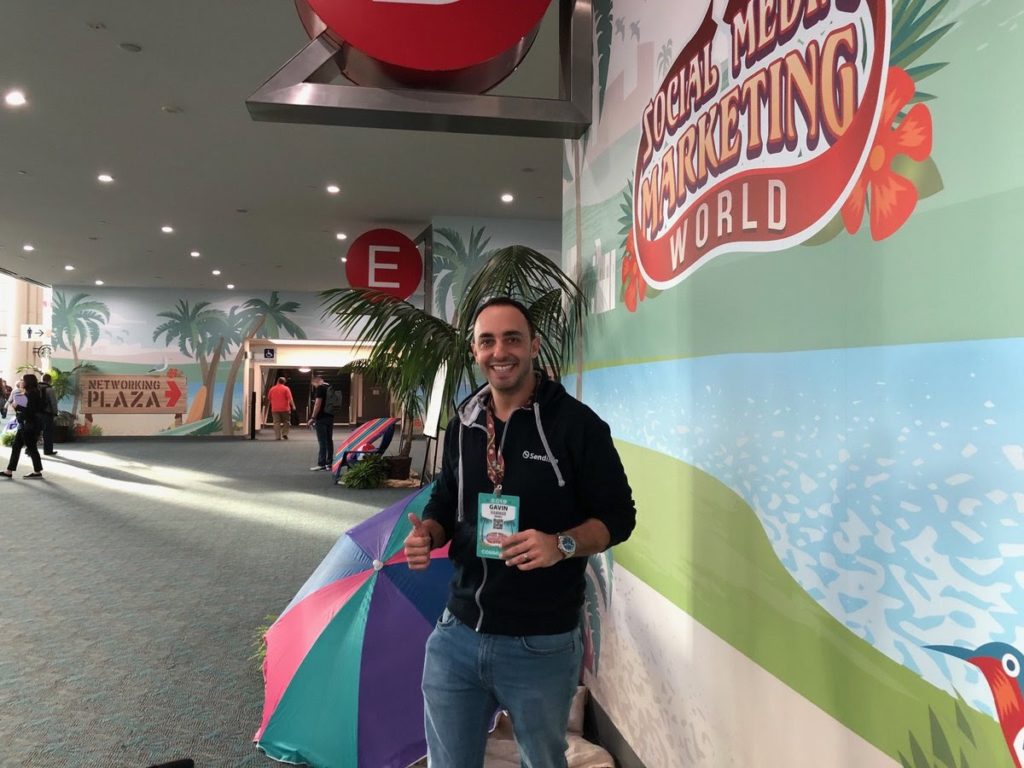
16. Are any Sendible features or pricing arrangements limited by geographical region or not available to some users everywhere? If any, why the limitation?
No, we don’t have any limitations, any pricing or anything like that.
The only thing is, we offer a sort of discount to nonprofits and educational institutions. But other than that, there are no other limitations.
17. Tell us about your pricing and why it’s ideal for small businesses? Do you have any special pricing of any kind?
Our pricing is designed to grow with you.
You can start up small and as you bring in more clients, and you have to manage more social profiles, it gives you the flexibility to add a service. And a service is sort of a one-way interaction between a platform and Sendible. It’s a one-way connection, so you can choose to manage streams.
Service could be, for example, a stream. And if you only want to do engagement, you can use that service to manage the stream. Or you can use the service as an outgoing connection to publishing content to Facebook, for example. If it’s a Facebook page.
So we give you the flexibility to decide on what set of structures you want to have in your plan. Which is why it’s so scalable.
On discounting, I guess as I said before, it’s about non-profits and educational institutions. We would give discounts to help them out. And discounts if you pay annually, obviously in advance we add 15% off. We are always running sort of discount codes and that kind of thing to help small businesses grow.
But as I said, our pricing is really affordable and it’s designed to help go from sort of the freelancer stage all the way up to an established full-scale agency.
18. Has Sensible caused a major shift or change in social media management and marketing? Tell us about it.
The shift is kind of what we preach as a brand to our customers. Since we’ve been telling people that it’s all about storytelling, and it’s not about just sharing links and driving sales. I think our customers have been able to use that information to help articulate the value of social media to their clients.
The shift here is that we’re trying to help our agency customers really show the value of social media to their clients. And because it’s no longer about driving sales and measuring the impact in terms of their bottom line. We’re now truly helping them to understand that social media is for brand building and for storytelling.
We’ve seen a shift from our customers. They’re all kind of buying into this brand vision and brand message of ours. And it’s helping them to kind of get buy-in from their clients as well.

19. Does Sendible guide its users on how to maximize the platform for success? How are you making it easier for users to leverage Sendible to manage and amplify their brands on social media?
So we’ve just introduced a weekly sort of workshops with our customers to help them make the most of, not just Sendible but social media in general. We give them steps, how to run their business, how they build their brands, how they do a good job for their clients, that kind of thing. So that’s something we do every week. It’s a live workshop.
We also host weekly training sessions for our clients where we will go deep to have a detailed overview of a particular area of the product.
So we might show how to make the most of the reporting to win your client’s business—that kind of thing. We do these webinars on a weekly basis. We also offer live chat with all our plans now, so if you have any questions or need any help on anything, there’s always someone there available to help you.
And we have a dedicated customer success team that is there to help any of our customers. So if you come in there and you have a particular goal—you want to be able to grow your agency by 30 percent this year—we have a team of customer success specialists who will help you grow your business. They might even introduce you to other clients or customers of ours that have grown their businesses in a similar way.

20. What is the big picture, where would Sensible be in the next five to ten years?
Our mission is to be a place where we can help agencies grow. Social media agencies in particular. A place where they can come to you to learn how to
- Do social media management,
- Bring on clients,
- How to win clients,
- Get renewals from clients,
- Show value to their clients.
And then you use that knowledge to get your agency off the ground and be able to attract more clients in the future through our software.
So we want to really be a hub for social media agencies to learn and grow. And to help other agencies grow as well.
Our mission is to really help agencies amplify the impact of their clients’ stories to make them successful. Again what can we do to help agencies get their clients’ stories out there on social media, in a way that helps the clients to be successful and the agency themselves to be successful. We want to build tools and offerings to help them do that.
SIGN UP for a 7 Day SENDIBLE.com Free Trial

